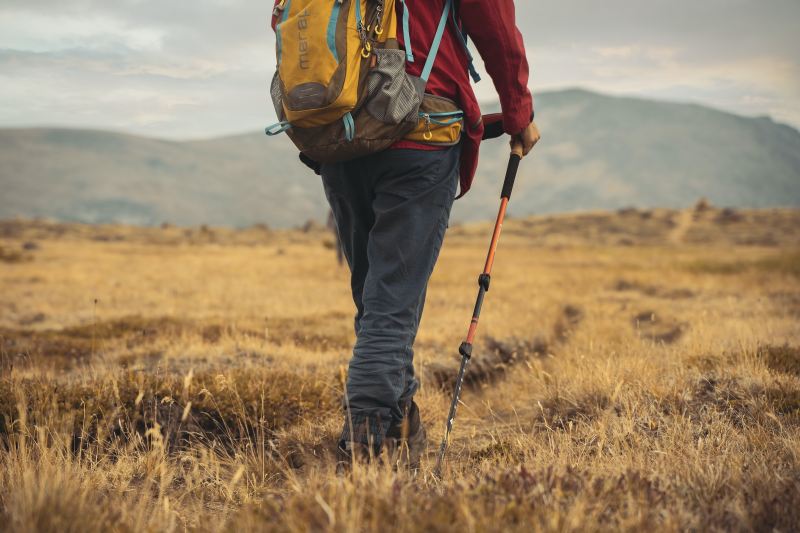
As long as humans have been pounding the trails, they’ve used trekking poles. Whether these are gnarled branches hewn into shape, or modern, technologically advanced poles, the reason is all the same. And yet there are those hikers who frequent the trails who swear that they don’t need them. Why? What are these people trying to prove?
Perhaps they’re not trying to prove anything. As an advocate of trekking poles, it can feel like people are missing out on a secret hiking weapon. But not every hike — or hiker — is the same, and not every situation calls for trekking poles. Here, then, is an impassioned but contextual plea to the poleless; at least consider trekking poles. Trekking poles have stood the test of time, and here’s why.
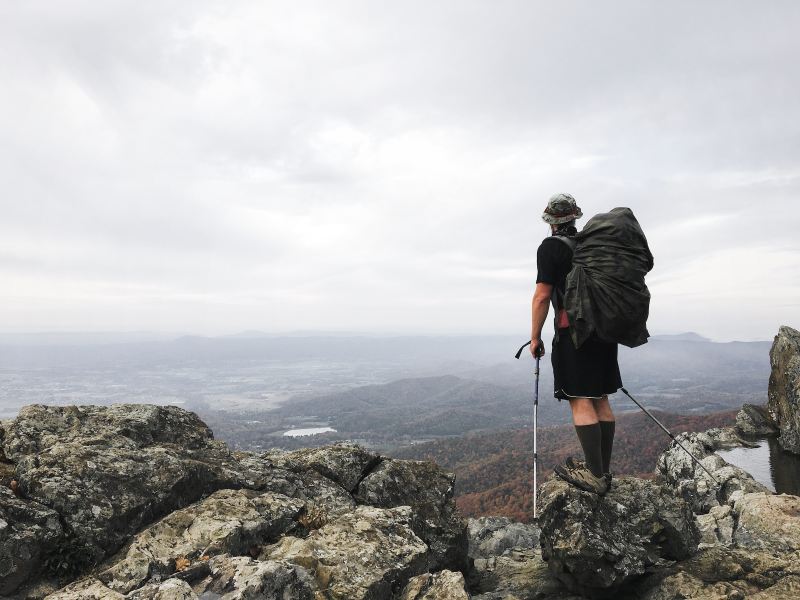
Why you should have trekking poles with you on the trail
Whether trekking poles reduce strain on your body is still uncertain, but what’s not unsure is their ability to reduce impact when you’re walking downhill. It’s particularly noticeable when carrying a heavy hiking backpack in rough terrain. Trekking poles act as an extension of your arms, allowing them to take some of the strain off your legs while keeping you balanced on technical ground. Once you place your pole, allow it to take some weight and use it as a support as you lower yourself gently, reducing the shock impacts of downhill hiking.
On flat and uphill sections of your hike, poles transform your walking position and style, giving you a full-body workout. A well-fitted set of hiking poles keeps your body upright, promoting a better flow of oxygen integral to keeping your muscles performing. Your poles will help to set a rhythm that your feet will move along with, building momentum with core and arm muscles and your legs to drive you along the trail.
Even a single pole can be a great help on the trail. You can use your hiking poles to clear overgrown plants out of your way, fend off wild animals, — as a last resort, of course — check the depth of a puddle or river crossing without over-committing, and even use your
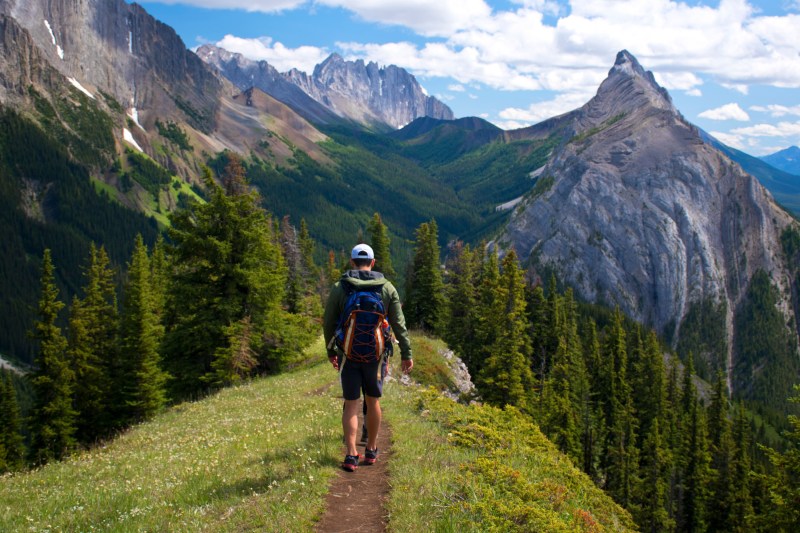
What are the drawbacks of carrying walking poles?
That seems reasonably conclusive; we should all be using trekking poles. So why is it that not everyone is converted then? Are these people just plain wrong, or is there a reason to avoid walking poles on the trail? The main reason is that they deem them to be unnecessary. Though hiking poles put you in a strong
Hiking poles can be cumbersome and even hazardous in the wrong settings and don’t suit every trail. Tripping over your
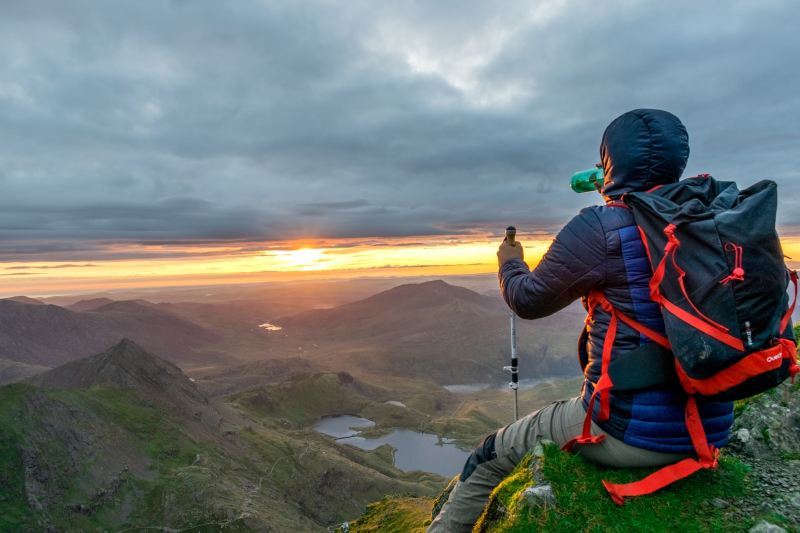
Your guide to trekking poles
Modern trekking poles are usually made from aluminum or carbon fiber and come in either fixed length or adjustable. Adjustable poles will fold up, or collapse telescopically, to fit onto the outside of your backpack. Most hikers will choose a collapsible trekking pole with either a twist-lock or clip-lock system to secure them in place. Twist-lock poles are usually cheaper but less secure and may come loose over time. If you’re a serious hiker, clip-lock poles are a superior choice. Fixed-length poles may be lighter than their adjustable counterparts but can’t be stowed away on your bag or adjusted in length.
The handles on these poles are usually straight-staff handles, but these are shaped for a more ergonomic fit and are made from plastic, foam, or cork for comfort. Foam or cork are usually preferred as plastic doesn’t breathe and can lead to blisters more easily. These grips generally have straps to keep your poles in place, so you don’t have to grip your poles tight all day.
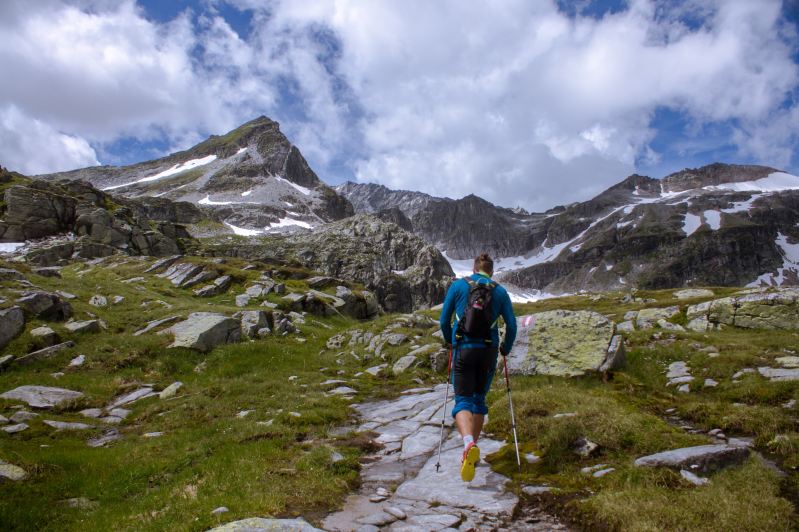
How to use your trekking poles
The general rule of thumb for sizing trekking poles is this: with your elbow by your side and your arm bent to 90º, your trekking pole should sit comfortably in your hand. A fixed pole’s lack of adjustability may make it less suitable when you change your footwear. The difference between your trail runners and thick-soled hiking boots may seem small, but it can be the difference between efficient pole use and an uncomfortable day on the trail.
To hold your pole, slide your hand into the straps from the bottom up, then hold your handle over the strap. This is counter to most hikers’ natural go-to but gives you a firm grip and means you get support from your poles without having to grip tightly.
Plant the pole opposite your footfall on flat trails when hitting a rhythm. This technique also works on slight uphills and downhills. On technical descents, use your poles for extra balance, but don’t rely on them to slow you down or slow your momentum. Plant both poles in front of you at once on steep climbs, creating a narrow gate to stride through, and repeat this process to drive yourself uphill.



